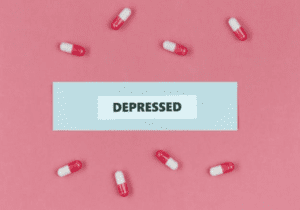What do you really know about ADHD?
This article has been researched and written by Nayla Daou. AI has not been used in producing this article.
ADHD, or attention deficit disorder, is a commonly known mental health disorder and can be easily described by teasing apart its acronym. Most of us have been made aware of the condition through social media, advertisements or friends but what does it really mean to have it and how is it diagnosed? To begin to answer that question, we must become familiar with the ADHD spectrum.
Have you ever been working on a project and had a great deal of difficulty focusing? Distractions turn your attention away; noises make you lose your train of thought and there’s always something else to do. These are all symptoms of ADHD, but they do not necessarily mean that you have the disorder, you may simply be on the spectrum.
What is the ADHD Spectrum?
The ADHD spectrum is a tool used to measure your level of symptoms and their severity. It was traditionally assumed that children unable to sit still in their classes were the only ones to receive the diagnosis of ADHD. However, new research has revealed that the disorder isn’t limited to a particular age group and is not a one-size-fits-all symptom-based diagnosis. In fact, many times, two individuals can have the disorder but display different behaviors. This is where the spectrum comes into play.
Mental health professionals use the spectrum to look at their patients from a holistic perspective, taking into account the varied symptoms and the motivations behind behavior. From their history and current symptoms, psychologists use the information to place patients on a spectrum from mild to severe. Depending on where they land on the spectrum, various treatments may be suggested.
ADHD Treatment
Treatment of the disorder can range from ADHD medication, to healthy living and behavioral strategies. Some examples of behavioral strategies and healthy living support that are used to treat patients with ADHD are meditation and mindfulness, dietary changes and deep breathing techniques. Those whose symptoms are on the more significant end of the spectrum might receive multiple types of supportive treatments. Whereas, individuals with milder symptoms may only receive behavioral and healthy living strategies.
Overview
With new evidence emerging that ADHD is not a one-size-fits-all diagnosis and treatment plan, it’s important to recognize the significance of understanding the spectrum. From mild to severe, the ADHD spectrum provides insight into the disorder and gives mental health professionals the ability to find treatment plans that are tailored to their patient and their individual symptoms.
Does Social Media Cause Depression?
According to recent estimates, roughly 4 billion people worldwide use various social media platforms, including Facebook, Twitter, Instagram, and LinkedIn. It’s not hard to believe. When you take a look around a crowd…
Child Development: Play Therapy in Dubai
Every child deserves to feel safe, empowered, understood, connected, and loved. Play therapy is based on the foundation of providing a safe environment for children to process their emotions and develop the social, em…
The Future of Depression Treatment
According to the World Health Organization (WHO), depression impacts more than 264 million people globally. Once diagnosed, depression treatment can be by medications, psychotherapy, or a combination of the two. While…
How to Talk to Your Therapist When You Have Social Anxiety
Social anxiety disorder (SAD), also called a social phobia, is characterized by intense fear or anxiety of being negatively evaluated, judged, or rejected in a social situation. Individuals with social anxiety often …
Managing Depression During Social Isolation
The outbreak of the global coronavirus pandemic is stressful for many people. Since the World Health Organization (WHO) declared the COVID-19 outbreak a global pandemic, regions across the world have mandated quaran…
What are Cognitive Behavioral Therapists?
Cognitive behavioral therapy (CBT) is a common type of talk therapy (psychotherapy) that has been demonstrated effective for a range of mental health struggles including anxiety disorders, depression, substance abuse …
Managing COVID-19 – Related Anxiety
The recent increase of COVID-19 cases in Europe and in the rest of the world has seen a great increase of strong emotions, such as overwhelming fear and worry, in our community. Despite the fact that the infection has…
What to Expect at Your First Family Therapy Session
Are you feeling a bit nervous about your first family therapy session? It’s very common to feel a bit apprehensive before starting any type of therapy. Therapy involves sharing personal information and intimate detail…
What do you really know about ADHD?
ADHD, or attention deficit disorder, is a commonly known mental health disorder and can be easily described by teasing apart its acronym. Most of us have been made aware of the condition through social media, advertis…
Taking Your First Steps to Seeing a Therapist
More often than not, the first step people take towards overcoming their mental illnesses, is making the decision to talk to someone about it, whether it’s a friend or a professional. It doesn’t help that our cultural…











